Scan this QR code to visit the companion website
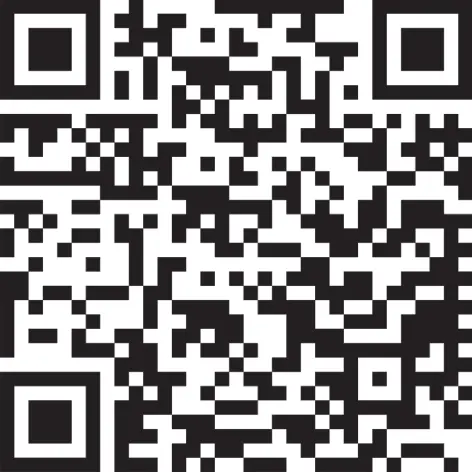
1 About the Book
About temporomandibular disorders: what is a ‘TMD’?
The term ‘temporomandibular disorders’ (TMD) covers a constellation of conditions. There have been many attempts to categorise these conditions but all have shortfalls. Some classify by anatomy, some by aetiology, and some by frequency of presentation. We should be aware, however, that there is considerable overlap in any classification system because these are often not clinically appropriate. No one system, therefore, satisfies all the criteria.
TMD affect the articulatory system, consisting of the temporomandibular joints, mandibular muscles, and the occlusion.
Any factor that has an effect on one part of the system is likely to influence other parts of the system, so it is important to avoid tunnel vision when considering possible signs and symptoms of a TMD.
As a dentist in practice, you will inevitably encounter patients with symptoms of a TMD, who may present with facial pain, earache, toothache, jaw joint sounds, or limited movement.
It is estimated that between 50% and 70% of the population will at some stage in their life exhibit some sign of a TMD. This may be subclinical and the patient might not relate the signs to a jaw problem.
In about 20%, these signs will develop into symptoms, which implies that the patient will take notice of hitherto ignored signs, and about 5% of the population will seek treatment. This will happen if the symptoms become intrusive in day‐to‐day life. It is important for you, as a dentist, to identify these patients and recognise their particular needs and treatment requirements.
The patient may attend complaining of toothache because their natural assumption would be that a tooth was causing the problem, but your role as a clinician is to diagnose the actual cause of the symptoms.
A patient presenting with a TMD may have symptoms, in any combination, which might include preauricular or facial pain, restriction or alteration of the range of mandibular movement, muscle pain that is worse with function, localised jaw joint pain, jaw joint sounds such as clicking or crepitation, unexplained tooth sensitivity, tooth or restoration fracture, and chronic daily headache. You must be able to diagnose what is and what is not appropriate for you to treat.
All treatment should be evidence‐based. Numerous treatments, either on their own or in combination, have been proposed in accordance with various aetiological theories of TMD. A wide range of pharmacological, occlusal alteration, psychotherapeutic, and physiotherapeutic treatments have also been suggested for the management of TMD, mainly aimed at the reduction of pain and improving the range of movement.
This is possibly the area of most contention in TMD management. Several treatments have been proposed which are not evidence‐ or scientifically based and when the literature is critically evaluated it is obvious they have little rationale. It is not sufficient to argue that if a treatment modality is published in a journal, which may not be subject to peer review, be un‐refereed, or is accessible through the Internet, then it is validated. The dentist has a responsibility only to prescribe treatment for patients that has a proven therapeutic value and ignorance of currently accepted views of what a reasonable body of dentists would do is not an excuse.
All TMD managements and treatments discussed in this second edition of the book are based, as much as possible, on scientific evidence and on sound clinical judgment in cases where only partial evidence or contradictory data were found.
In modern dental schools, there is a shift from traditional teaching to more interactive methods. In classical didactic textbooks, readers are frequently seen as passive recipients of information, without any engagement in the learning process. Problem‐based learning increases the effectiveness of delivering information and makes learning a more memorable experience for the reader.
 A green flag denotes a positive pathway and suggests that the reader should follow this train of thought.
A green flag denotes a positive pathway and suggests that the reader should follow this train of thought.
 A red flag signals caution and suggests that the reader should think hard about this aspect of diagnosis, investigation, or treatment.
A red flag signals caution and suggests that the reader should think hard about this aspect of diagnosis, investigation, or treatment.
 The ‘information’ symbol indicates a passage of text that imparts fact(s) that should be remembered.
The ‘information’ symbol indicates a passage of text that imparts fact(s) that should be remembered.
Assessment of knowledge is by a link to online self‐assessment multiple‐choice questions, which are marked correct or incorrect, and by short answer questions at the end of the book to which answers are not given because the reader needs to research the topic in the text.
 The ‘S’ symbol (with a number) indicates a link to the flowcharts which can be found at the end of the book in Appendix I.
The ‘S’ symbol (with a number) indicates a link to the flowcharts which can be found at the end of the book in Appendix I.
Chapter 2: Clinical aspects of anatomy, function, pathology, and classification
This chapter deals with the need for a basic understanding of the normal anatomy, physiology, and pathology of the temporomandibular joint and mandibular muscles, which is essential not only for an understanding of the disease processes involved in TMDs but also for an appreciation of treatment objectives.
Chapter 3: Articulatory system examination
This chapter discusses clinical examination and is indispensable! It outlines an easy yet comprehensive examination routine that should be employed for all your patients, not just those with a TMD.
Chapter 4: I've got ‘TMJ’
This chapter illustrates a classic history of a common TMD in a patient who thinks that she knows best. This highlights the importance of critical evaluation of the information (baggage) that a patient might bring to the consultation.
Chapter 5: I've got a clicking joint
This represents the most common condition about which you will be asked. Does a click need treatment? This raises your awareness of the need for treatment and the different treatment options for a commonplace complaint.
Chapter 6: I've got a locking joint
Joint locking can be acute or long‐standing. Intervention is often necessary, but how and when? The various options are discussed, as is their practical relevance. We explore the range of options from ‘doing nothing’ to ‘surgery’.
Chapter 7: I've got a grating joint
Degenerative joint disease in the temporomandibular joint is very different from disease in the hip. Nature has a part to play, but we can intervene to make life more tolerable for the person with the condition. Learn about the cyclical nature of this condition and its ramifications.
Chapter 8: You've changed my bite
The possibility of introducing iatrogenic changes to a patient's bite is quite real and can have immediate consequences. Avoidance of the problem is the best approach but to do this you must be aware of the potential pitfalls in restorative care.
Читать дальше
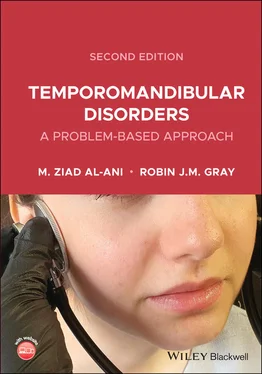

 A green flag denotes a positive pathway and suggests that the reader should follow this train of thought.
A green flag denotes a positive pathway and suggests that the reader should follow this train of thought. A red flag signals caution and suggests that the reader should think hard about this aspect of diagnosis, investigation, or treatment.
A red flag signals caution and suggests that the reader should think hard about this aspect of diagnosis, investigation, or treatment. The ‘information’ symbol indicates a passage of text that imparts fact(s) that should be remembered.
The ‘information’ symbol indicates a passage of text that imparts fact(s) that should be remembered. The ‘S’ symbol (with a number) indicates a link to the flowcharts which can be found at the end of the book in Appendix I.
The ‘S’ symbol (with a number) indicates a link to the flowcharts which can be found at the end of the book in Appendix I.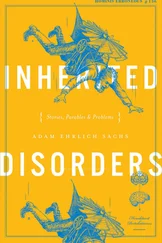


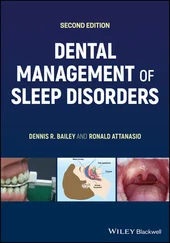




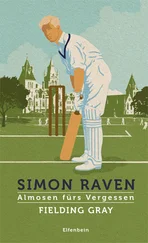


![John Bruce - The Lettsomian Lectures on Diseases and Disorders of the Heart and Arteries in Middle and Advanced Life [1900-1901]](/books/749387/john-bruce-the-lettsomian-lectures-on-diseases-and-disorders-of-the-heart-and-arteries-in-middle-and-advanced-life-1900-1901-thumb.webp)